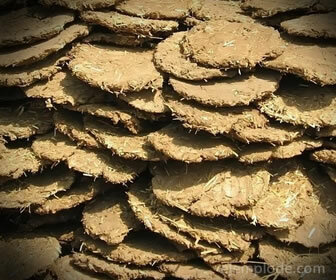Organic Waste Example
Biology / / July 04, 2021
Is named Organic Residues or Waste to all those that originated from some living being, animal or vegetable; it is any matter of organic chemical composition that has served its Primary purpose and is discarded.
The source material comes from nature, humans transform or consume it directly, and it remains Organic Waste, which can be reusable. The most common is that organic waste is directed to agriculture as fertilizer or crop enrichment, or to feeding and fattening animals.
The way in which this type of waste is generated is domestic, commercial or industrial. Together they represent a high percentage of the total waste generated by societies. That is why there is concern about the reuse of organic waste, which has been very fruitful, especially for the care of the earth, based on its double function of replacing a new product that should not be produced, and at the same time not generating more garbage.
In order to achieve this, a series of defined techniques had to be developed for the treatment of organic waste. The most common way to take advantage of organic waste is through the production of compost for the land, which ensures the fertility of the soil. The main nutrients that are required for a rich environment for the development of vegetation are Nitrogen, Phosphorus and Potassium.
This task is simple, and can be done in the same home, where the waste uses almost its potential for nutrients. Another treatment, somewhat more complex and delicate, is the production of gas with organic waste.
Generation of Gases with Organic Waste
Organic waste tends to decompose naturally and with the help of bacteria, in two ways: By contact with oxygen in the air, also called Degradation; or in the absence of air, receiving the name of Putrefaction. In both cases, the decomposition will emit gases, such as Hydrogen Sulfide H2S, Carbon Dioxide CO2, Methane CH4. During a Putrefaction, Methane CH4 It will be present in the products in a greater proportion, and if the amount of waste is large, the production of this gas will be enough to start using it as fuel.
There are devices intended for the purpose of containing Rot and recovering the gases emitted. Called Biodigesters. There are biodigesters built in livestock stables, which are fed with the feces of cattle, and are obtains Methane gas that will be directed to a distribution network, and will be useful for the pasteurization of milk, for example.

Examples of Organic Wastes
1. Remains of fruits and vegetables, including the skins.
2. Bones and meat scraps.
3. Thorns and all kinds of fish rest.
4. Shells and discarded elements of shellfish.
5. Leftover bread.
6. Spoiled food.
7. Different types of chopsticks (ice cream, Chinese food).
8. Eggs shell.
9. Urine from domestic animals.
10. Litter
11. Waste of all kinds of nuts.
12. Used kitchen paper.
13. Used napkins.
14. Domestic animal droppings.
15. Used tissues.
16. Flowers, even in a withered state.
17. Any cork material.
18. Leaves, even dried.
19. Grass and weeds
20. Bags
